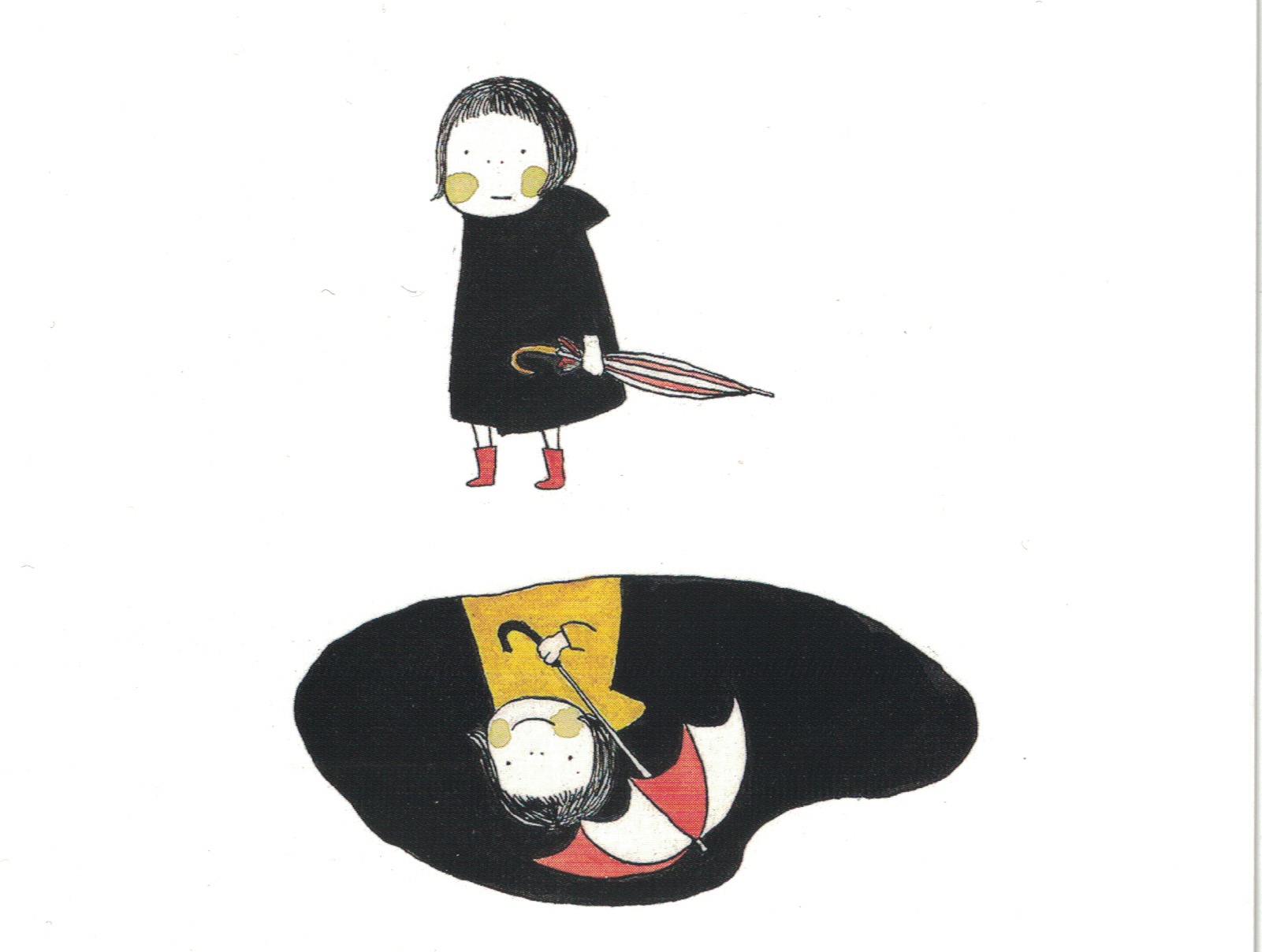和訳は英文の下にあります。/ The Japanese translation is below the English text.
Contents 1. Summary 2. “Masu” stem of the verb 3. -Tai desu 4. Hoshii desu 5. -Taku-narimasu 6. Hoshiku-narimasu
How to Express Speaker’s Hope and Desire
1. Summary
In this post, we will discuss how to say “I want/would like” in Japanese.
We use two ways of expressing the speaker’s hope and desire. It depends on the grammatical type of the object of desire: One is when it is a verb (or when you want to take an action) and the other is when it is a noun (such as “water”).
For either object type, we make a distinction on two aspects of the desire. Aspect here means whether the hope or desire is a current, continued state, or when it is transient.
Here is the summary of the expressions of hope and desire for the first person.
| Subject | Aspect | Object of desire expressed with a verb | Object of desire expressed with a noun |
|---|---|---|---|
| First person ("I") | Static (present and/or continuing) | Mizu ga nomitai desu. (I would like to drink water.) => See Section 3 | Biza ga hoshii desu. (I would like a visa) => See Section 4 |
| First person ("I") | Transient (occasional or habitual) | Tokidoki haha no koe ga kikitaku narimasu. (Sometimes I want to hear my mom's voice.) => See Section 5 | Tsukareta toki, amai mono ga hoshiku narimasu. (When I am tired, I want something sweet.) => See Section 6 |
2. “Masu” stem of the verb
First, we would like to share a grammar term with you. It is “masu” stem of the verb, and you make it as follows:
A verb always ends in “masu” in the polite speech style, in the affirmative and the present tense. Remove the “-masu” from the verb, and what remains is the “masu” stem.
The following are some examples of “masu” stem:
- Tabe- (from “tabemasu”, eat)
- Mi- (from “mimasu”, see or watch)
- Hataraki- (from “hatarakimasu”, work)
3. -Tai desu
To say “I want to DO something” at the time of speaking, use “-tai” after the “masu” stem of the verb.
Ex. 1. Mizu ga nomitai desu. (I would like to drink water.)
“Nomitai” in Ex. 1 is the combination of “nomi” and “-tai”. “Nomi” is “masu” stem of “nomimasu” (drink) and the following “-tai” adds the meaning “I want to”.
“Desu” after “-tai” is invariable and expresses politeness.
Compare Ex. 1 and a basic sentence in the present tense (Ex. 2) to find what are special about the grammar of “-tai.”
Ex. 2. Watashi wa mizu o nomimasu. (I will drink water. /I drink water.)
First, you don’t have to mention the subject with “-tai”. It is because “-tai” expresses the speaker’s hope and desire only. Usually, you need the subject, such as “watashi wa” (“I”), at the beginning of a sentence (See Ex. 2).
Second, the object marker “o” in Ex. 2 can be replaced by “ga” in a sentence with “…tai.” In other words, you can say “Mizu ga nomitai” or “Mizu o nomitai.” for “I want to drink water”. Is there any difference?
Yes, a slight one. In “mizu ga nomitai”, “ga” shows the strong relationship between the object of desire (“mizu”) and the desire (“-tai”). On the other hand, “o” in “mizu o nomitai” marks the relationship between the object (“mizu”) and the transitive verb (“nomi-”).
Note, however, that “o” is the only particle that you can replace with “ga” in a sentence with “-tai. In other words, you can say “ga” only after a direct object of the verb.
Lastly, a verb connected to “-tai” is turned into an I-Adjective and inflects as such. Accordingly, the basic inflections are as follows:
| Tense | Affirmative sentence | Negative sentence |
|---|---|---|
| Present/Future | Mizu ga nomitai desu. (I would like to drink water.) | Mizu ga nomitakunai desu. (I would not like to drink water.) |
| Past | Mizu ga nomitakatta desu. (I wanted to drink water.) | Mizu ga nomitakunakatta desu. (I didn't want to drink water.) |
・More on the use of “-tai desu” => How to Use Expressions for Hope and Desire
4. Hoshii desu
Use “hoshii” to say “I want something now,” only when the object of your desire is expressed with a noun. See this:
Ex. 3. Mizu ga hoshii desu. (I would like some water.)
“Hoshii” always means “I (the speaker) want”, so you don’t have to mention the subject.
Therefore, you can start the sentence with “mizu” (water), followed by the particle “ga”. This “ga” shows the preceding word is the object of desire. Complete the sentence with “hoshii desu” (I want), adding “desu” to express politeness. This “desu” never inflects.
“Hoshii” is I-adjective, and the basic inflections are as follows:
| Tense | Affirmative sentence | Negative sentence |
|---|---|---|
| Present/Future | Mizu ga hoshii desu. (I would like water.) | Mizu ga hoshikunai desu. (I would not like water.) |
| Past | Mizu ga hoshikatta desu. (I wanted some water.) | Mizu ga hoshikunakatta desu. (I didn't want water.) |
・More on the use of “hoshii desu” => How to Use Expressions for Hope and Desire
5. -Taku-narimasu
Sometimes our hope and desire are transient. It means the hope or desire occurs and dissipates according to the circumstances. For this kind of desire, we connect a special expression “narimasu” (become) to the afore-mentioned “-tai desu” and “hoshii desu”.
“-Tai desu”, for one, becomes “-taku narimasu” only when your desire is transient and when the object of desire is expressed with a verb. See Ex. 4:
Ex. 4. Tokidoki haha no koe ga kikitaku narimasu. (Sometimes I want to hear my mom’s voice.)
In “kikitaku narimasu”, “kikitaku” is the connective form of “kikitai” (I want to hear). You can make it by replacing the last “i” of “kikitai’ with “ku” to connect to “narimasu” (become). The resulting “kikitaku narimasu” (become desirous) indicates that there was a change in your state of mind; from the absence of the hankering (in this case, I am not thinking about my mother) to the presence of it (I want to hear her voice).
“-Taku narimasu” expresses the speaker’s hope and desire only, so you don’t have to mention the subject.
Since “-taku narimasu” thus means you feel the hope or desire temporarily, it usually comes with an expression on the specific circumstances, or for a certain frequency, such as “tokidoki” (sometimes) in Ex. 4. Below are more examples:
Ex. 5. Huyu wa, nabe-ryoori ga tabetaku narimasu. (In winter, I want to eat hot-pot dishes.)
Ex. 6. Bijutsu-ten ni iku to, itsumo e-hagaki o kaitaku narimasu. (When I visit an art exhibit, I always want to buy postcards.)
In this structure with “-taku-narimasu”, basic conjugations are as follows:
| Tense | Affirmative sentence | Negative sentence |
|---|---|---|
| Present/future | Koe ga kikitaku narimasu. (I want to hear her voice [in certain circumstances].) | Koe o kikitaku narimasen. (I don't want to hear [even in certain circumstances].) |
| Past | Koe ga kikitaku narimashita. (I wanted to hear her voice [in specific circumstances].) | Koe o kikitaku narimasendeshita. (I didn't want to hear her voice [even in certain circumstances].) |
Note: With “-taku narimasu”, “o” and “ga” for the object are interchangeable, as we explained about it for “-tai desu”. However, in the negative sentences in the table above, we feel it’s more natural to say “o” due to the absence of the desire.
6. Hoshiku-narimasu
Instead of “hoshii desu”, we say “hoshiku narimasu” to talk about our transient desire and hope, and when you express the object of desire with a noun. See the following example:
Ex. 7. Tsukareruto, amai mono ga hoshiku narimasu. (When I am tired, I want something sweet.)
In this grammar, you use the particle “ga” after what you want, as with “hoshii desu.”
“Hoshiku” is the connective form of “hoshii” (I want). Replace the last “i” of “hoshii” with “ku” and can connect it to “narimasu” (become). The resulting “hoshiku narimasu” (become desirous, but only used with a noun) indicates that there is a change in your state of mind; from not having the desire to having the desire.
As with “hoshii desu”, “hoshiku narimasu” only expresses the speaker’s hope and desire, so you don’t have to mention the subject.
Also, “hoshiku narimasu” means you feel the hope or desire temporarily. Therefore, it usually comes with an expression to show the specific circumstances, such as “tsukareruto” (whenever I am tired) as in Ex. 4, or to show a certain frequency. See another example:
Ex. 8 Minna ga motte iru to, watashi mo atarashii geemu ga hoshiku narimasu. (When everyone else has a new game, I want one, too.)
The main part of the predicate “-taku-narimasu” is a verb, and so it conjugates as follows:
| Tense | Affirmative sentence | Negative sentence |
|---|---|---|
| Present/Future | Amai mono ga hoshiku narimasu. (I want sweets [in certain circumstances].) | Amai mono ga hoshiku narimasen. (I don't want sweets [even in certain circumstances].) |
| Past | Amai mono ga hoshiku narimashita. (I wanted sweets [in certain circumstances].) | Amai mono ga hoshiku narimasendeshita. (I didn't want sweets [even in certain circumstances]). |
Related Posts
=> How to Express Desire of the Second and Third Person
=> How to Use Expressions for Hope and Desire
[End of the English post]
自分の希望・欲求の表し方
目次 1. まとめ 2. マス語幹 3. ~たいです 4. ほしいです 5. ~たくなります 6. ほしくなります
1. まとめ
この投稿では、自分の希望・欲求の表現の方法について考えます。
話者自身の希望・欲求の表現は、欲求の対象を表す言葉の種類によって二通りを使い分けます。一つは行動を起こしたい時など動詞、もう一つは「水」など名詞の時です。
どちらの場合も、その欲求のアスペクトによって二種類に区別されます。ここでいうアスペクトとは、その希望や欲求が現在続いている状態か、あるいはうつろっていくものかを指します。
下表に、この記事で扱う「話者の希望・欲求表現」をまとめました。
| 主語 | アスペクト(相) | 取りたい行動を表す動詞を使う場合 | 欲しいものを名詞で表す場合 |
|---|---|---|---|
| 一人称(私) | 静的な状態(現在の、または恒久的な状態) | 水が飲みたいです。 | ビザがほしいです。 |
| 一人称(私) | うつろう状態(場合により起こったりなくなったりする、または習慣的) | ときどき母の声が聞きたくなります。 | 疲れた時、あまいものがほしくなります。 |
2. マス語幹
まず、文法用語を一点確認します。動詞の形の一つを、マス語幹と呼びたいのです。マス語幹は、以下のように作ります。
丁寧体の動詞は、時制が現在で肯定形の時、「ます」で終わります。その形の動詞から「ます」を取り除いて、残った部分がマス語幹です。次に例を挙げます。
・食べ (「食べます」から)
・見 (「見ます」から)
・働き (「働きます」から)
3. ~たいです
現時点で行動を欲しているとき、動詞の「マス語幹」の後に「~たい」を使って表します。
例1.水が飲みたいです。
この例の「飲みたい」は「飲み」と「たい」の結合です。「飲み」は動詞「飲みます」のマス語幹で、欲求を表す「~たい」と結びついています。
「~たい」の後の「です」は不変で、丁寧さを表します。
例1を現在時制の単文(例2)と比べて、「~たい」の文法の特徴を確認しましょう。
例2.私は水を飲みます。
まず、「~たい」は話者の希望・欲求しか表さないので、「~たい」の文では主語を言う必要がありません。普通は文頭に「私は」のような主語が必要です(例2)。
次に、「~たい」の文では、「が」を例2の目的語を表す助詞「を」の代わりに使えます。つまり、「水が飲みたいです」も「水を飲みたいです」と同じ意味なのです。まったく同じかというと、
ほんの少し違います。例1では「が」は欲求を表す「~たい」とその対象である「水」の関係を強調しますが、「を」は「飲み」と「水」が動詞と目的語の関係であることを明らかに示しているということです。
なお、このように「~たい」の文で「が」と互換可能な助詞は「を」だけです。すなわち、動詞の目的語のあとに限って「が」が使えるということです。
最後に、動詞は「~たい」と結び付くとイ形容詞になります。従って、「〜たい」はイ形容詞として活用します。基本の活用は下表のとおりです。
| 時制 | 肯定文 | 否定文 |
|---|---|---|
| 現在・未来 | 水が飲みたいです。 | 水が飲みたくないです。 |
| 過去 | 水が飲みたかったです。 | 水が飲みたくなかったです。 |
・「~たいです」については、こちらもご参照ください。=> 希望・欲求表現の使い方
4. ほしいです
現在の欲求を表現するもう一つの言い方は、「ほしい」です。「ほしい」は、欲しいものが名詞で表される時にだけ使います。
例3. 水がほしいです。
「ほしい」の主語は必ず「私(話者)」なので、主語を言う必要はありません。
それで、文頭に「水」、次に助詞「が」を言います。「が」は、その前の言葉が欲求の対象であることを示します。最後に「ほしいです」で文を結びます。「です」は丁寧表現で、変化しません。
「ほしい」はイ形容詞で、基本の活用は下表のとおりです。
| 時制 | 肯定文 | 否定文 |
|---|---|---|
| 現在・未来 | 水がほしいです。 | 水がほしくないです。 |
| 過去 | 水がほしかったです。 | 水がほしくなかったです。 |
・「ほしいです」については、こちらもぜひご参照ください=> 希望・欲求表現の使い方
5. ~たくなります
希望・欲求は、うつろうことがあります。場合によって起こったりなくなったり、あるいは習慣的に起こったりするという意味です。このような希望・欲求は、動詞「なります」を、前述の「~たいです」「ほしいです」と結びつけて表現します。
まず、表現したい欲求がうつろう性質のもので、欲求の対象が動詞で表される場合に限って「~たくなります」を使います。次の例を見てください。
例4.ときどき母の声が聞きたくなります。
「聞きたくなります」の「聞きたく」は「聞きたい」の連結形です。この形にすると「聞きたい」が「なります」へつなげられます。結果としてできる「聞きたくなります」は、話し手の心が欲求のない(ここでは母のことを考えていない)状態から欲求のある(母の声が聞きたい)状態へ変わるという意味になります。
「~たいです」と同様「~たくなります」は話者の希望・欲求を表すので、主語を言う必要はありません。
「~たくなります」は一時的な希望・欲求を意味するため、普通それが起こる頻度や状況を説明する表現と一緒に使われます。例4では「ときどき」がそれに当たりますが、以下の例も見てください。
例5.冬は、なべ料理が食べたくなります。
例6.美術展に行くと、いつも絵葉書を買いたくなります。
なお、「~たくなります」の文型では、基本活用は下表のようになります。
| 時制 | 肯定文 | 否定文 |
|---|---|---|
| 現在・未来 | 声が聞きたくなります。[ある状況で] | 声が聞きたくなりません。[ある状況にあっても、など] |
| 過去 | 声が聞きたくなりました。[ある状況で] | 声が聞きたくなりませんでした。[ある状況にあっても、など] |
注:「~たくなります」では「を」と「が」に交換可能です。ニュアンスの違いは、第3節で述べた通りです。ただ、上の表の否定文では、「を」の方が自然だと思います。欲求が存在しないので。
6. ほしくなります
うつろう希望や欲求で、対象が名詞で表される場合だけは、「ほしくなります」を使います。次の例を見てください。
例7.疲れると、甘いものがほしくなります。
この文法では、「ほしいです」の場合と同様、欲しいものの後に「が」を言います。
「ほしく」は「ほしい」の連結形で、この形にすると「ほしい」を動詞「なります」につなげられます。その結果できる「ほしくなります」は、「欲求がない状態」から「欲求がある状態」への変化を示します。
「~ほしくなります」も話者の希望・欲求を表すので、主語を言う必要はありません。
また、「~ほしくなります」は一時的な希望・欲求を表すため、普通それが起こる頻度や状況を説明する表現と一緒に使われます。例7では「疲れると」がそれに当たりますが、以下の例も見てください。
例8.みんなが持っていると、私も新しい携帯が欲しくなります。
「~ほしくなります」の基本活用は次のようになります。
| 時制 | 肯定文 | 否定文 |
|---|---|---|
| 現在・未来 | 甘いものがほしくなります。[ある状況で] | 甘いものがほしくなりません。[ある状況で] |
| 過去 | 甘いものがほしくなりました。[ある状況にあっても] | 甘いものがほしくなりませんでした。[ある状況にあっても] |
関連記事
=> 希望・欲求表現の使い方




